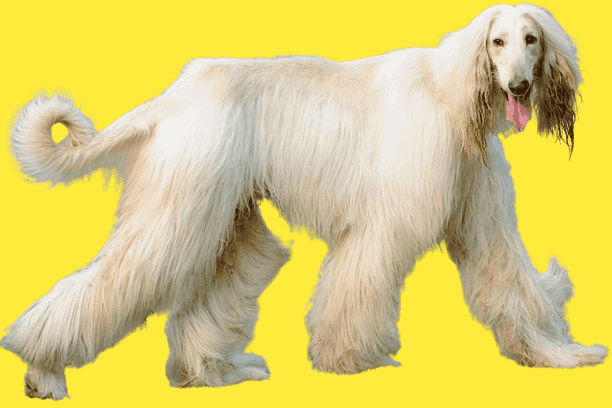Can Dogs Eat Cat Grass?
Is it safe for dogs to consume cat grass? To shed light on the possible influence of cat grass intake by dogs, as well as safety issues and how this verdant treat could affect the well-being of our companion animals, the purpose of this essay is to dig into the domain of cat grass consumption by dogs.
Can Dogs Eat Cat Grass?
An additional source of beneficial fibre, this robust leafy green aids in maintaining regular bowel movements. For tiny animals like cats, birds, dogs, and reptiles, cat grass is a popular and nutritious food supplement.
What Exactly is Wheatgrass?
 Wheatgrass, a young grass that is rich in nutrients and belongs to the Triticum ostium plant family, is highly regarded for its nutritional value. This plant is most often found in mild climates and is picked while it is young, around 7 to 10 days after it sprouts.
Wheatgrass, a young grass that is rich in nutrients and belongs to the Triticum ostium plant family, is highly regarded for its nutritional value. This plant is most often found in mild climates and is picked while it is young, around 7 to 10 days after it sprouts.
This lush, verdant grass is an excellent source of chlorophyll, enzymes, minerals, and vitamins. In addition to amino acids, iron, magnesium, calcium, and vitamins A, C, and E, it also includes these minerals. Its dark green color and possible antioxidant and anti-inflammatory effects are caused by its high chlorophyll concentration.
People started drinking wheatgrass juice or eating wheatgrass powder because of its purported health advantages. Some people think it may help with digestion, detoxification, and general health, while others say it helps strengthen the immune system. Some people consider it a superfood because of its supposed capacity to eliminate pollutants, promote healthy blood flow, and increase energy levels.
Why Offer Wheatgrass to Your Dog or Cat
Wheatgrass is a great addition to any dog’s or cat’s diet and may even improve their health in general.
Nutritional Boost
Wheatgrass is an excellent dietary supplement for pets since it is rich in enzymes, minerals, and vitamins. The immune system, eyes, and skin all rely on the vitamins A, C, and E that it contains. Wheatgrass also contains many minerals, including iron, calcium, and magnesium, which are good for dogs’ health and vigor.
Digestive Health
Wheatgrass has digestive-enhancing potential for canines and felines alike. It may help reduce hairballs in cats and promote regular bowel movements thanks to its high fiber content, which supports gastrointestinal health. The wheatgrass’s fibrous texture may perhaps aid in the expulsion of indigestible substances from their digestive system.
Potential Detoxification
Some pet owners give wheatgrass to their animals because of its detoxifying effects, which are also recognized in humans. There’s some evidence that it may aid in the detoxification process for dogs by neutralizing toxins and bolstering liver function.
Caution and Moderation
Wheatgrass may have some positive effects on your pet, but you should still introduce it slowly and in small amounts to see how they respond. Overconsumption may cause gastrointestinal problems, and certain animals may be sensitive to new food additives. To be sure wheatgrass is safe for your pet, it’s best to check with your vet before adding it to their diet.
How to Feed Wheatgrass to Your Dog or Cat
To make sure your pet is safe to eat and can enjoy wheatgrass, there are a few easy measures to follow while preparing it.
Choose Organic and Pet-Safe Wheatgrass
Select organic wheatgrass seeds that are marked as being safe for pets to ingest. Make sure there are no chemicals or pesticides on the grass that might hurt your pet.
Growing Wheatgrass at Home
Wheatgrass seeds may be started inside a small container with some potting soil. After planting the seeds, make sure they get enough water and put the pot in a bright spot. After 7 to 10 days, the grass will get tall enough to eat.
Offering Wheatgrass to Your Pet
Make a slow introduction of wheatgrass to your pet. Prepare the wheatgrass by trimming its blades and offering a little sample to see how it reacts. Wait for a reaction and make sure there are no negative side effects before giving them more.
Potential Risks of Dogs Eating Cat Grass
There are various dangers for dogs to consume cat grass, even if it is not poisonous to cats. While dogs may not become sick from eating grass per se, it’s important to think about any chemicals—fertilizer, insecticides, or otherwise—used to cultivate the grass. Dogs may experience gastrointestinal distress or other health issues if they ingest these chemicals.
Dogs may have gastrointestinal distress, including vomiting and diarrhea, if they eat too much cat grass. It is essential to closely monitor their consumption and make sure the grass is free of any dangerous elements to avoid these problems.
Conclusion
Ultimately, it is still not known whether or not cat grass is compatible with dogs or whether it has any benefits for dogs’ diets, but it is safe for cats to eat. Given the unknowns surrounding the advantages and hazards of cat grass, dog owners should proceed with care when introducing it to their pets.
If you care about your dog’s health, you’ll do your homework, talk to vets, and be careful when adding new foods to his diet. By taking the time to learn about the ins and outs of what’s best for dogs, we can keep them healthy and happy and avoid the hazards that come with giving them strange goodies like cat grass.
Also Read:
Where To Buy Activated Charcoal for Dogs?
How To Get Dog Smell Out Of Blankets?
How To Get A Dog Unstoned At Home?
Does My Dead Dog Know I Miss Him?
Do You Get Paid to Foster Dogs?
Can Dogs have Freeze-dried Strawberries?
Can Dogs Get High from Blowing Smoke in the Ear?





